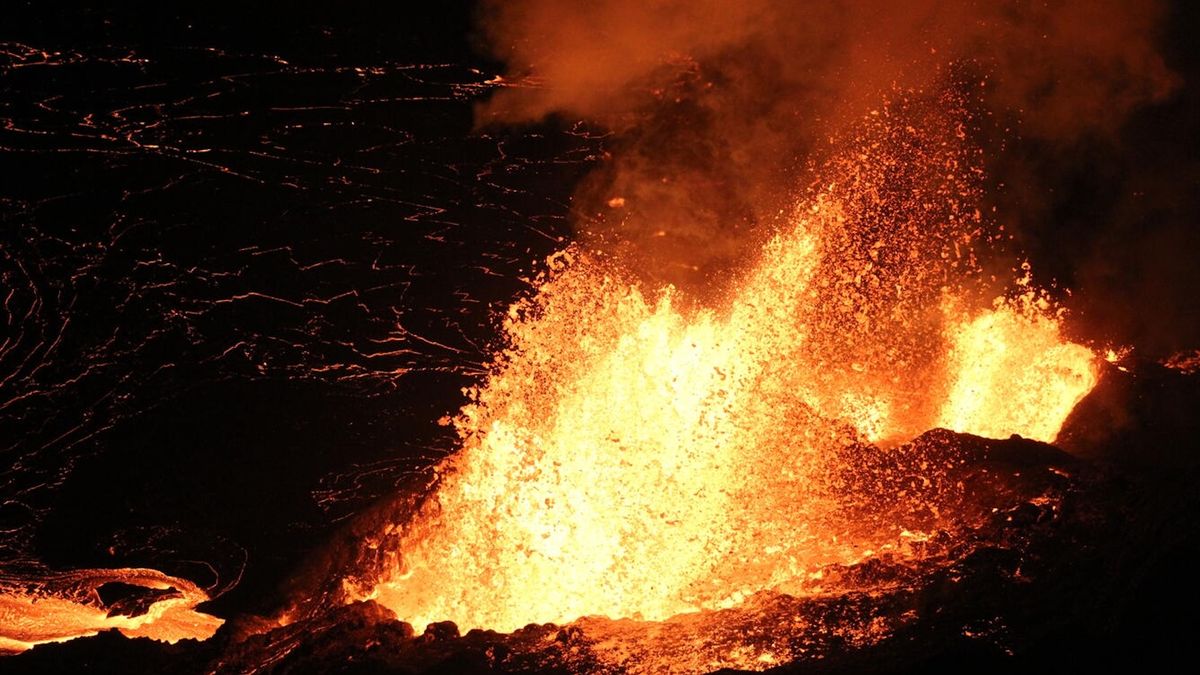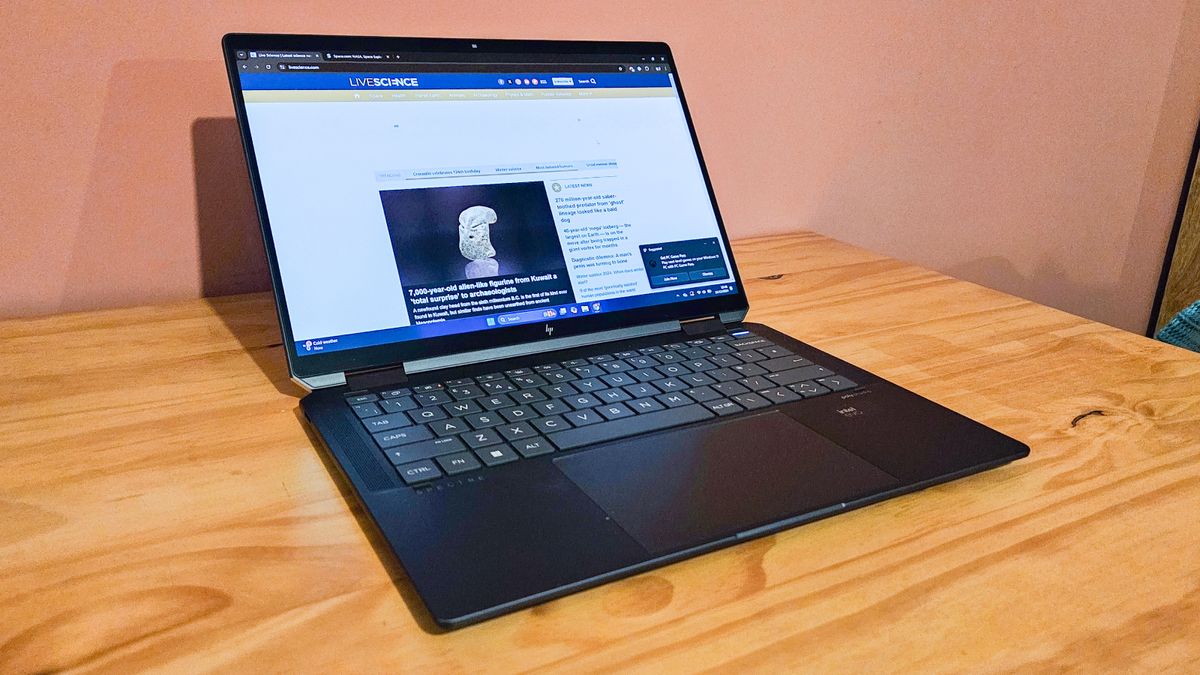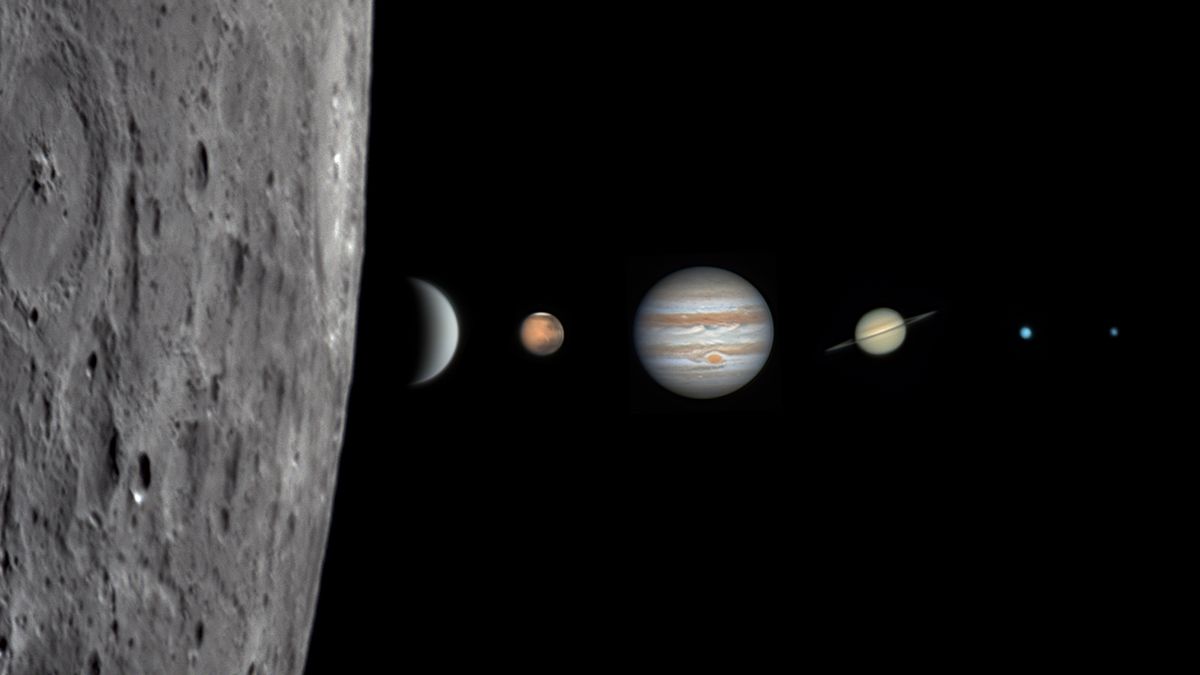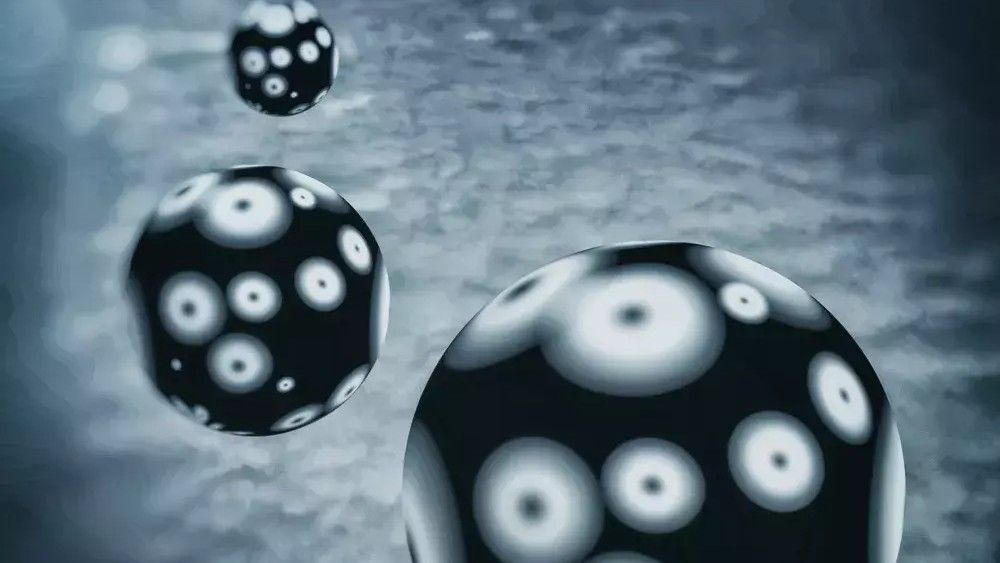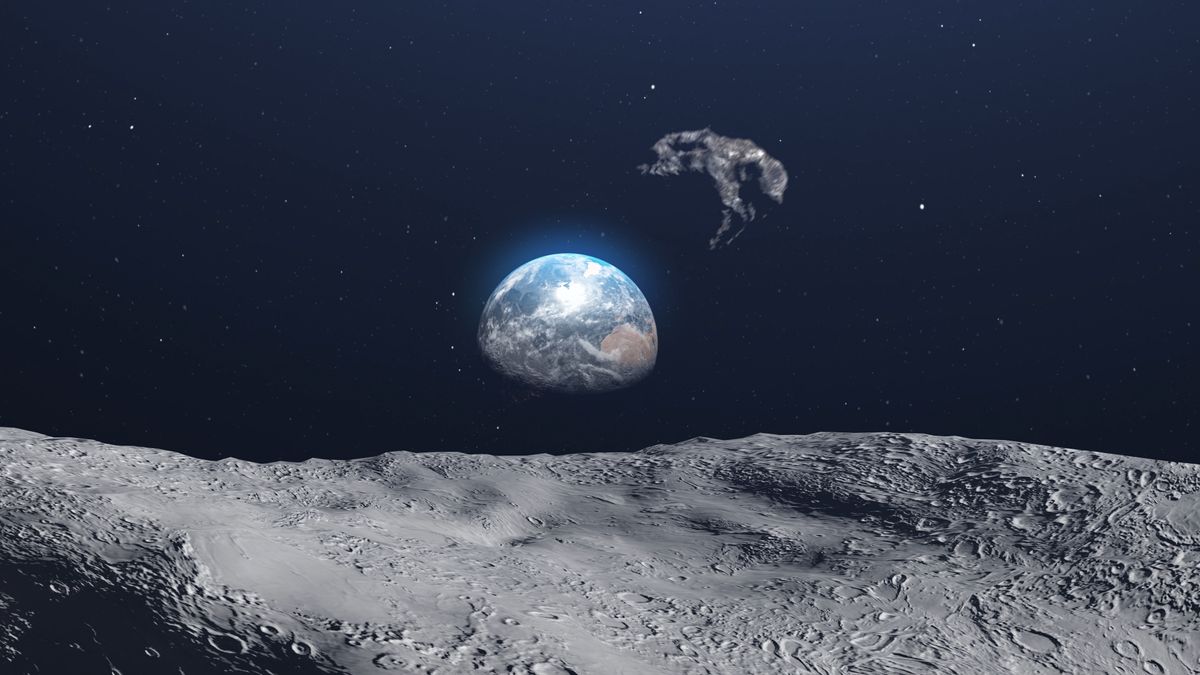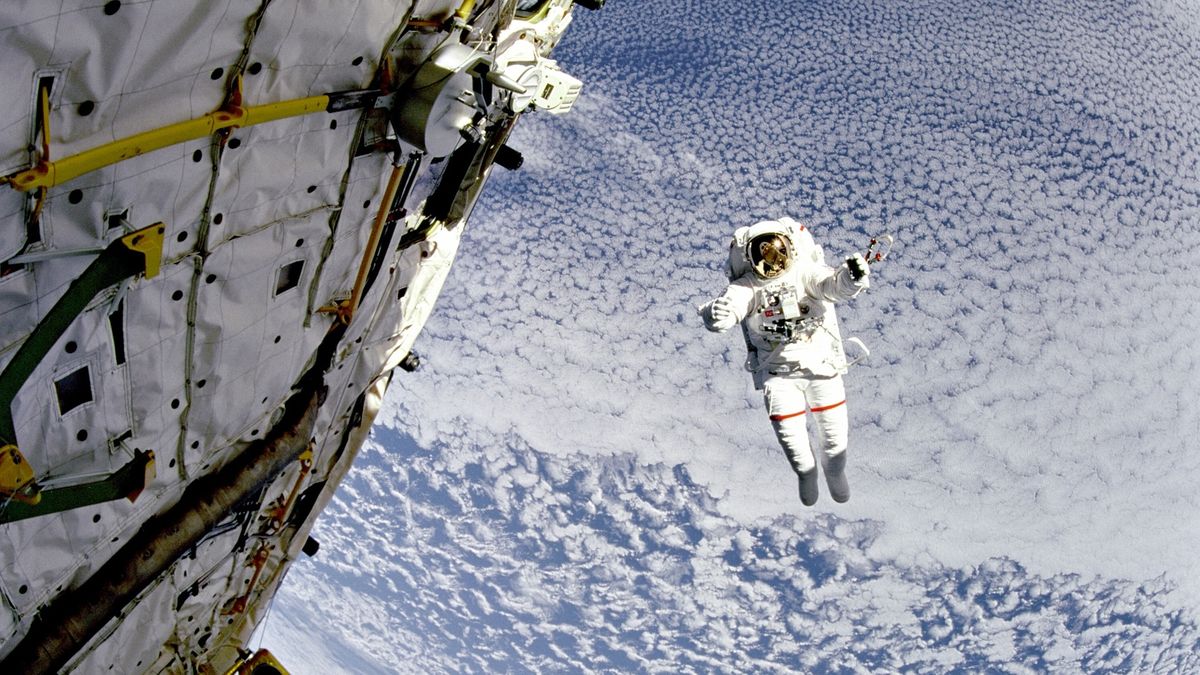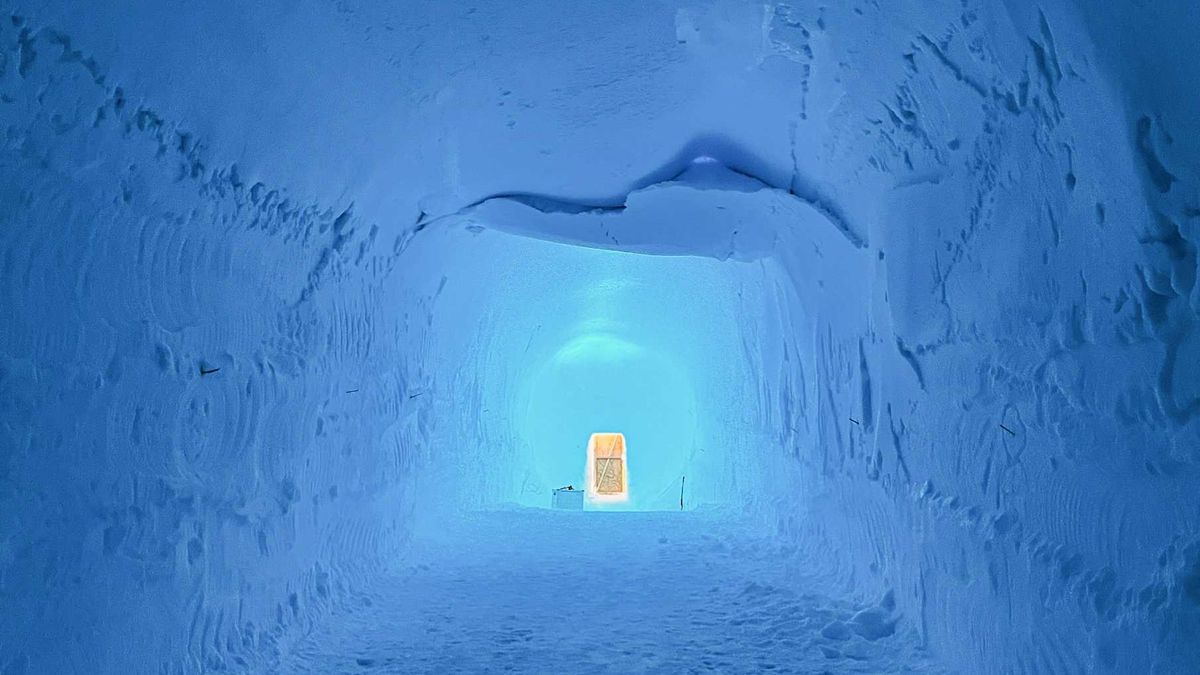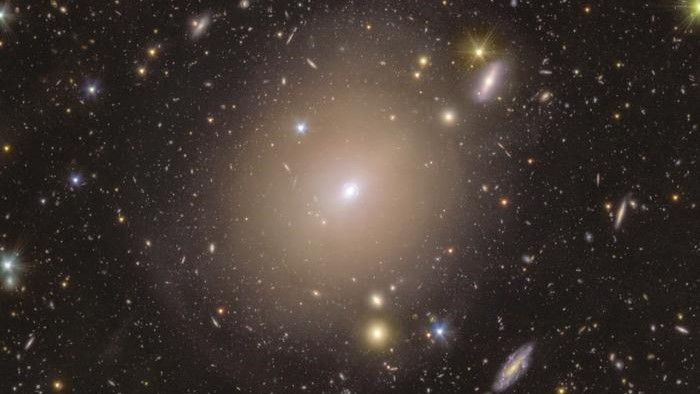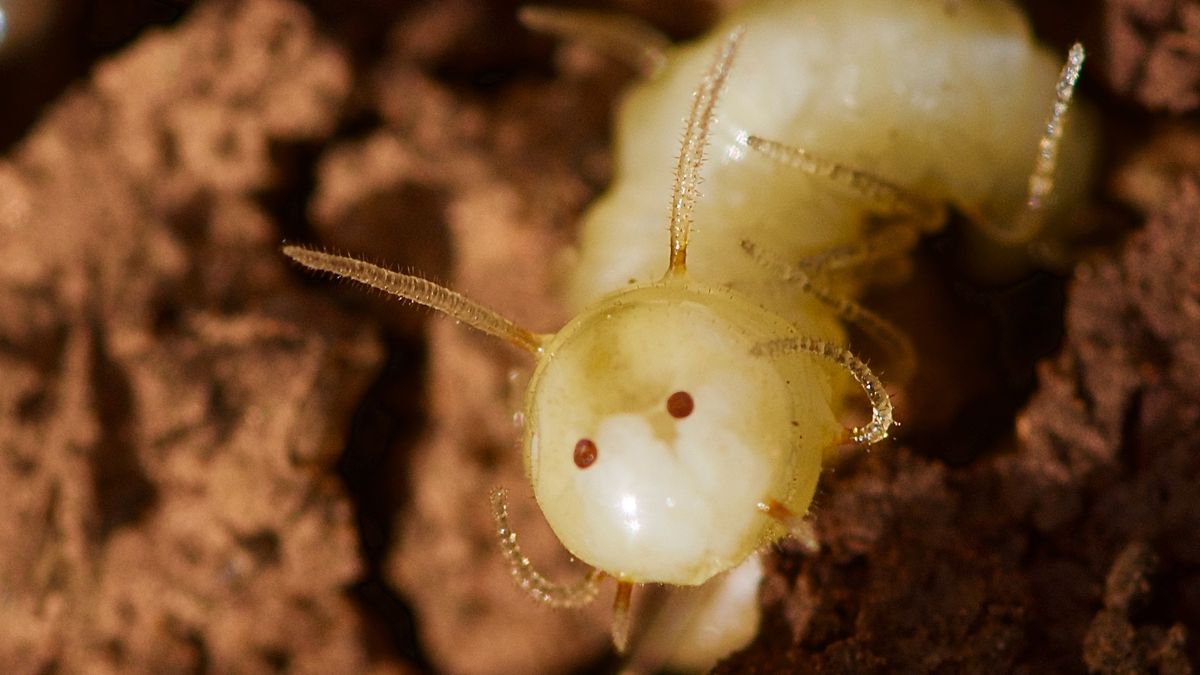In a fiery display, Kilauea volcano, on Hawaii’s Big Island, spewed a gigantic fountain of lava roughly 330 feet (100 meters) — the height of a small skyscraper, on Tuesday (Feb. 11), according to the U.S. Geological Survey (USGS).
The towering lava fountain is part of an ongoing eruption that started Dec. 23, 2024. The latest volcanic activity is part of the ninth episode of eruptive activity, which started when lava began flowing on the Halema’uma’u crater floor Tuesday morning, according to reports from the USGS. A livestream of the eruption can be viewed on the USGS YouTube channel.
Kilauea is the youngest and most active volcano on the Big Island, which is also home to three other active volcanoes: Mauna Loa, Mauna Kea and Hualalai. About a half hour after the eruption started on Tuesday, the tall fountain of lava spewed from the north vent of the summit’s caldera and continued to flow into the crater. As the episode continued into the night, lava fountains became shorter, averaging heights of 160 to 200 feet (50 to 60 m).
Although tall, these lava fountains aren’t Kilauea’s tallest. Back in 1959, the volcano spewed an “awesome and terrifying” lava fountain 1,900 feet (580 m) above its vent, according to the USGS. But even Tuesday’s eruption posed problems to USGS equipment.
“Tall fountain heights from this latest episode of the eruption pose a threat to the cameras, which can begin to warp and melt if the erupting lava fountains reach high enough to get close to them,” the USGS reported.
Related: Volcanoes like Kīlauea and Mauna Loa don’t erupt like we thought they did, scientists discover
The ninth episode lasted 22.5 hours, ending on Wednesday (Feb. 12). Previous eruptions have lasted between 13 hours and eight days, with between 16 hours and 12 days of pauses between episodes. These episodic eruptions happen within the enclosed area of Hawai’i Volcanoes National Park.
“Current hazards include volcanic gas emissions and windblown volcanic glass (Pele’s Hair) that may impact Hawai’i Volcanoes National Park and nearby communities,” USGS officials warned in a statement. Pele’s hair, named for the Hawaiian goddess of fire and volcanoes, forms when gas bubbles at the lava’s surface burst, causing the bubble to stretch out into a long and sharp thread of glass as it cools. These glass threads can then end up in drinking water on farms or in people’s personal rainwater catchment systems.
Additional hazards from the eruption include volcanic gas consisting of water vapor, carbon dioxide and sulfur dioxide, which could form hazy volcanic smog, known as vog, in the atmosphere, according to the USGS.
The area surrounding the Halema’uma’u caldera rim has remained closed to the public since late 2007 due to the risk of wall instability, ground cracking, and rockfalls triggered by earthquakes, according to the USGS.
Visitors can witness the current eruption from various viewing points along Crater Rim Drive in Hawaii Volcanoes National Park.
“Although lava may be visible within the national park, conditions can change at any time,” officials wrote on the National Park Service’s website.





